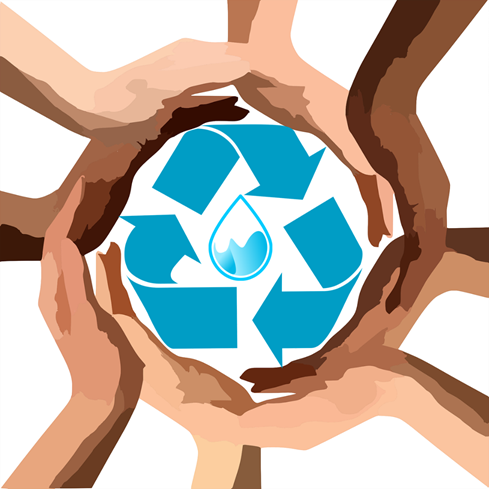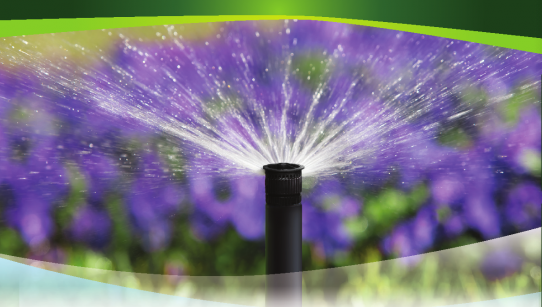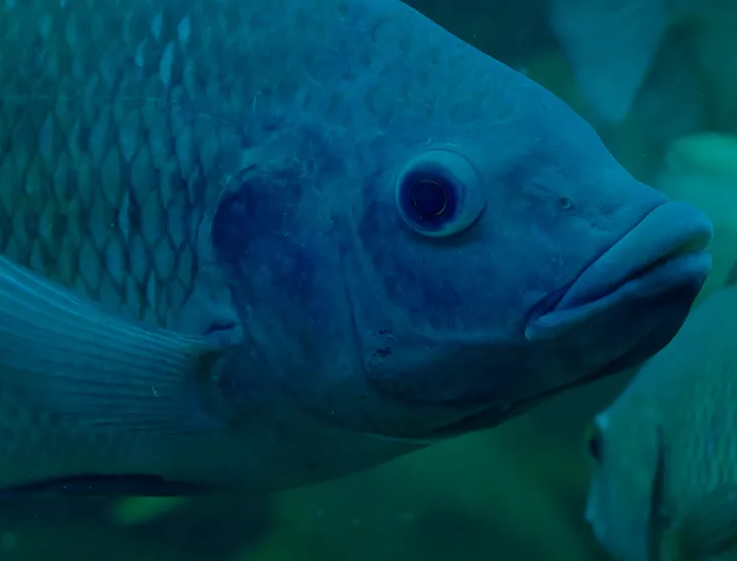Water Efficiency
What is water efficiency and why is it important?
Water efficiency is the reduction of water wastage by comparing the amount of water required for a particular purpose and the amount of water used or supplied. Water efficiency is different from water conservation in that it focuses on reducing waste and not restricting use. It is important to understand what resource efficiency is and how it can contribute to sustainable resource management. Resource efficiency usually refers to the ratio of resource inputs to economic output and social benefits. Technologies or policy tools that increase efficiency enable society to generate more revenue from limited environmental resources. Resource efficiency is a key factor in efforts to sustain economic development while maintaining natural resources.
Even if improved resource efficiency results in declining resource use, it may still put excessive demand on the environment The visualization of competition for water between the environment and economic uses shows that sustainable and efficient water management requires the intervention of all sectors and should be integrated with the management of other resources such as energy, materials, and land.

Measures and tools
The goal is to ensure that society's needs for the environment are limited to
the extraction of resources and the elimination of pollution.
Reduce water consumption and increase water use efficiency
The goal is to ensure that society's needs for the environment, the extraction
of resources and the elimination of pollution are adequately limited.
Water use efficiency in agriculture
Agriculture is a major consumer of water in Europe, accounting for about 33% of total water use. This allocation varies considerably; however, in some parts of southern Europe, it can reach up to 80%, where crop irrigation accounts for all agricultural water use. In many parts of southern Europe, crop irrigation has been practiced for centuries, forming the basis of economic and social activity.
In more humid
and temperate regions, irrigation controls the availability of water suitable
for agricultural purposes and reduces the risk of crop failure during periods
of low rainfall or drought, thereby stabilizing farmers' incomes. While
increasing the yield and quality of crops, irrigation can also lead to adverse
environmental impacts including water scarcity. The disadvantages of excessive
agricultural water use are exacerbated by its high consumption. Although some
irrigation water 'returns' to groundwater through percolation, consumption
through vegetation and evaporation is generally significant, with approximately
70% of water not returning to a reservoir.
Traditionally,
supply-based approaches have ensured a regular supply of water for agriculture
through reservoirs, inter-basin transfers, and increasing abstraction of
surface water and groundwater. However, in general, such practices are not only
sustainable in the long run but also exacerbate the adverse effects of
agricultural water use on freshwater habitats. Several technical and management
measures are in place to improve the efficiency and sustainability of
agricultural water use. However, the efficiency gain associated with each
approach is strongly dependent on factors including crop, soil type, and
climate, which should be fully understood before implementing the measures.
Best practices to improve water efficiency in agriculture
1. Drip Irrigation
Drip irrigation allows the flow of water into the soil at an extremely low rate reducing loss by evaporation.
2. Greenhouse Technology
Greenhouse technology is used to create a favorable environment for plants. Greenhouses are framed or inflated structures made of transparent or translucent material sufficient to grow crops under partially or completely controlled environmental conditions to achieve optimal growth and productivity.
3. Hydroponics
Hydroponics is a type of horticulture and a subculture of
hydroculture that involves the cultivation of plants without soil using mineral
nutrient solutions in an aqueous solution. Hydroponics offers many benefits,
especially in reducing water consumption in agriculture.
4. Mulching
Mulch is a layer of material applied to the surface of the soil. The reasons for mulching are to conserve soil moisture, improve soil fertility and health, reduce weed growth, and enhance the beauty of the area. A mulch is usually organic in nature.
5. Wastewater treatment and reuse
Recycled wastewater must follow certain
procedures to reduce the concentration of contaminants in it. It can be
conventional methods (waste separation, residue), methods of removing certain
elements (nitrogen, phosphorus), disinfection. It can reuse to washing
vehicles, decorative fountain green plantings of landscape areas etc.
Improving irrigation efficiency
Irrigation efficiency includes transport efficiency and field application efficiency. Transport efficiency refers to the percentage of abstract water supplied to the field. Transportation efficiency varies depending on the type of irrigation system. Therefore, the transition from open channels to pressure pipelines is an important water conservation step.
Across the EU,
the potential water savings from improving transport efficiency is estimated to
be 25%. Field application efficiency is the ratio of the amount of water used
by a crop to the total amount of water supplied to that crop, indicating how
well an irrigation system works in transporting water to the plant roots. A
strong difference is evident when comparing pharaohs with sprinkler and drip
systems, with the efficiency being about 55% for the first, 75% for sprinklers
and 90% for drip systems.
More efficient irrigation systems are gradually being implemented in Europe. In Spain, between 2002 and 2008, the area irrigated by gravity decreased from about 1.4 million hectares to more than 1 million. During the same period, drip irrigation increased from 1.1 million hectares to 1.6 million hectares. However, if the increase in irrigation efficiency leads to the expansion of the irrigation area, there will be no change in the increase in irrigation or increase in water if the efficiency increases. For example, subsidized drip irrigation technologies in the Valencia region of Spain did not lead to lower application rates.
Reusing wastewater
In areas where
water is scarce, treated wastewater provides an alternative source of
irrigation water for crops. This system grows well in Europe, especially in
Spain, Italy, Cyprus, and Greece. The quality of the recovered water based on
chemical and bacterial loads should be considered and handled properly. It aims
to achieve the restrictions in effect in many EU member states, but a more
unified guideline for controlling and implementing water reuse in agriculture
will help further adopt and intensify this approach.
In 2010, the Food and Agriculture Organization of the United Nations (FAO) released a report on the economic framework for evaluating the use of reclaimed water in agriculture as part of a comprehensive planning process on water resources utilization strategies to make it more economically viable.
Tackling illegal water use
Although reliable data on this subject are scarce, in some parts of Europe, illegal water extraction from groundwater, often for agricultural purposes, is widespread. Unauthorized use of water may involve digging unlicensed wells or more than the permitted amount from licensed wells. In addition, it can occur from surface water with transportable pumping equipment. Addressing illegal water use is crucial, but it represents a major political and technical challenge.
Monitoring is required to detect illegal wells, and cases found by authorities to prevent further illegal abstraction should be pursued with fines or penalties. Monitoring is also needed to ensure continued compliance. In Spain, for example, illegal water extraction represents a major threat, especially during times of drought. While drought management schemes cut back on irrigation to meet priority needs, farmers resort to illegal groundwater exploitation to protect their crops from drought. The risk of drought translates into the risk of groundwater depletion
Water saving devices and products
The water efficiency of many other modern appliances, including modern large electrical appliances such as washing machines, dishwashers, toilets, taps, showers, and public plumbing, has improved in recent decades. As these inventions become standard in new buildings, there is considerable potential for most of Europe to own and use these modern home appliances. About 25-30% of total household water use is toilet flushing. Similarly, using dual flush and low flush toilets can save up to 30 litres per item per day.
Installing
water-efficient shower heads can save an object up to 25 litres per day. Water
flow ventilation will significantly reduce the use of water in showers, which
mimics the experience of a power shower, but does not require a large amount of
water. This type of ventilation can also be applied to water flowing through
taps. Thermostatic mixing valves in showers and taps maintain the selected
temperature and make significant gains in water and energy. Taps with infrared
sensors provide water only when they detect an object beneath them, which can
save up to 70% or more.
Rainwater harvesting
'Greywater' refers to all household effluents except those from toilets, such as baths, showers, washbasins, kitchens, and washing machines. In the simplest recycling systems, ash water is stored and then used for flushing toilets and irrigating gardens (except edible plants), thereby reducing the use of drinking water. Gray water from baths, showers, and washbasins are usually selected from kitchen sinks and dishwashers as it is non-polluting. However, the microbial quality of ash water raises public health issues especially when it has been stored for some time. Therefore, the immediate use of ash water is desirable, although approaches to reduce contamination of stored water also exist.
Reuse of greywater and rainwater harvesting from the roof or other impermeable surfaces can be directed or piped to a receiving container and then used for gardening and car washing. Rainwater harvesting, therefore, reduces the domestic use of treated public water supply for distribution, for example, washing machines and toilets. This is even more important in countries with abundant water resources, which can also reduce the burden on urban drainage systems during heavy rainfall. Financial arrangements to compensate those who install such systems will increase incentives for local management of rainwater.
Harvesting systems can range in size and complexity from a simple garden butt to community systems. In Berlin, for example, a tank collects rainwater that falls on a 32,000 m2 roof associated with large-scale urban development.
While harvesting saves water, the energy used to build, install, and maintain the infrastructure required for certain systems emits larger greenhouse gas emissions than main water. However, there is scope to improve the design of such systems including storage tanks and pumps to reduce carbon footprint.
Reducing leakage
Leakage is the largest component of supply loss. The combined 'supply loss' of a water supply network, which includes water used to flush pipes, bill less consumption and illegal consumption, can only be calculated indirectly as the difference between the drinking water produced and the end-user metering.
These are based on considerations such as customer health and the financial return period for investments in infrastructure maintenance. Leaks in sewage systems can infiltrate or discharge depending on the local groundwater table. Sewage discharge can contaminate groundwater and thereby compromise groundwater resources in cities for human consumption. Infiltration helps to dilute the wastewater and causes a proportional increase in pollution loads to the environment. Large-scale infrastructure maintenance projects aimed at reducing urban drainage are often far-sighted and should be integrated with urban planning for projects in other areas such as transportation, telecommunications, gas, and heating.
Raises awareness
Awareness campaigns targeting water consumers in homes and businesses play a key role in water conservation. Such campaigns include a variety of approaches, including websites, educational programs in schools, pamphlets by local authorities and water companies, live event advertisements, and the public media. It can also focus on the benefits of installing water-efficient appliances and products.







.png)




No comments yet